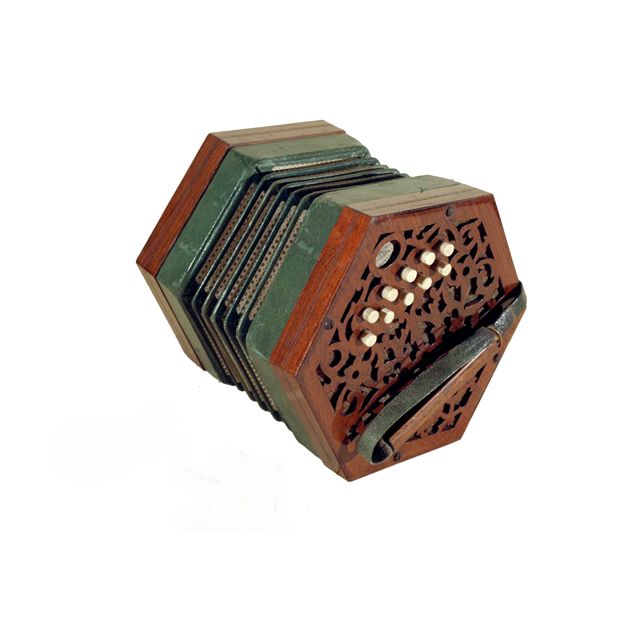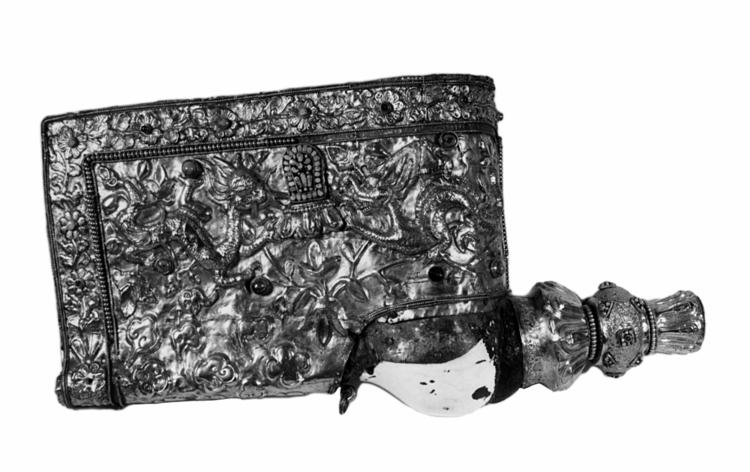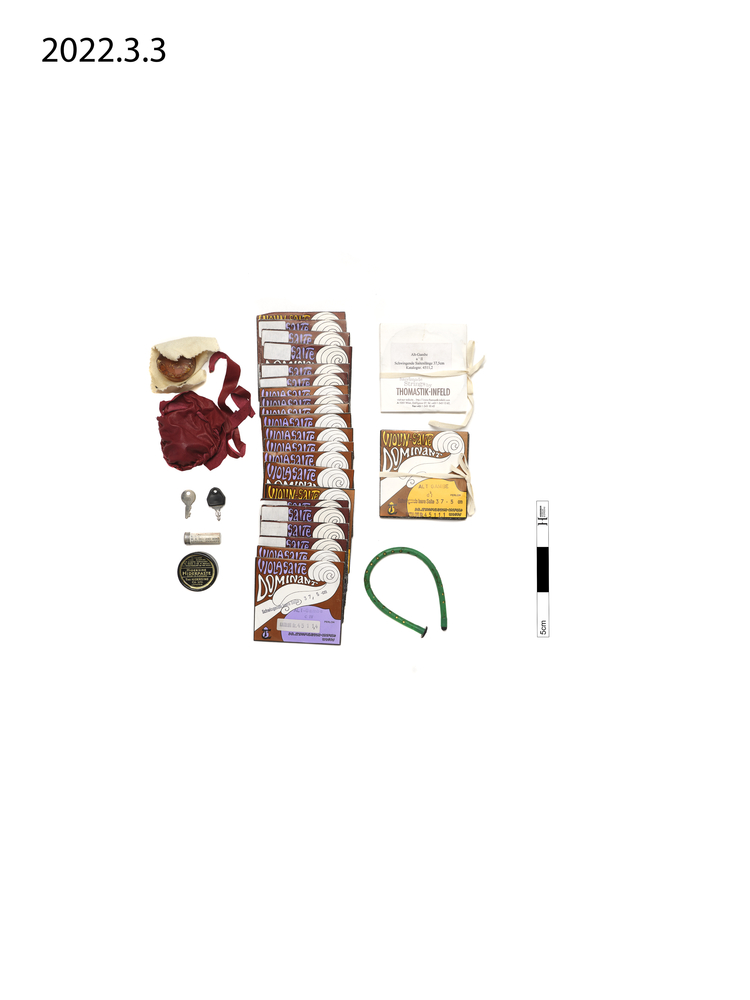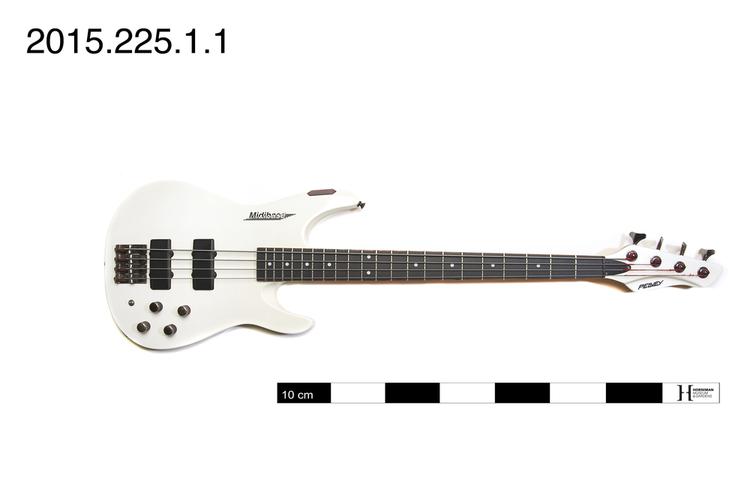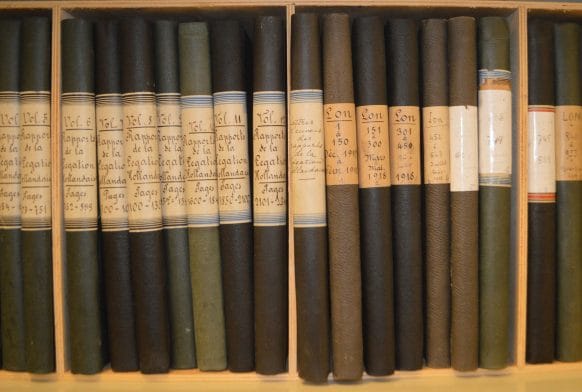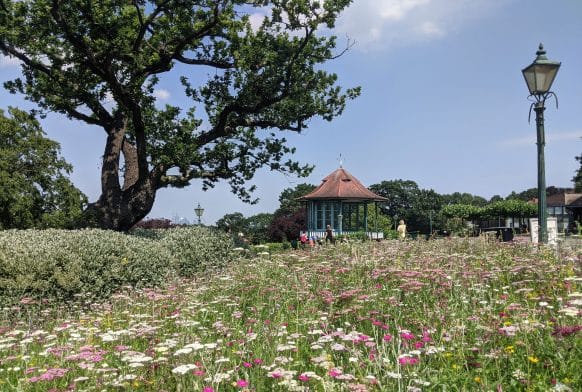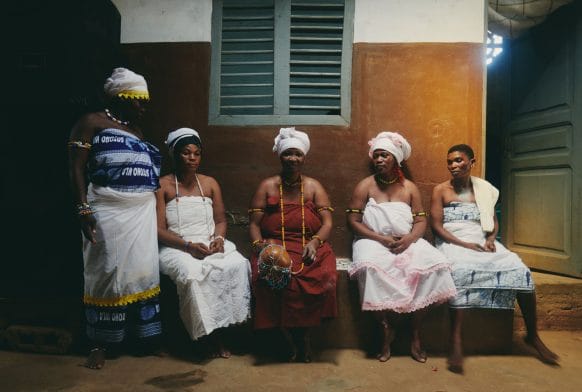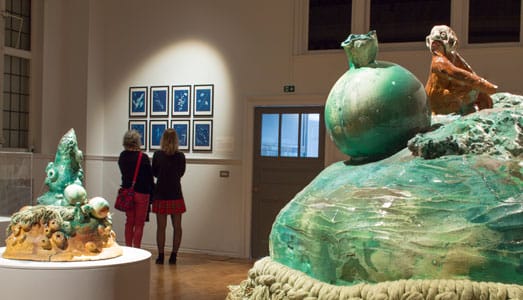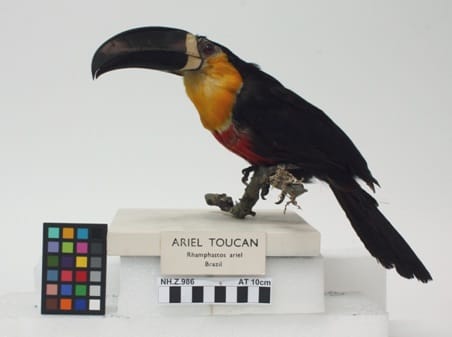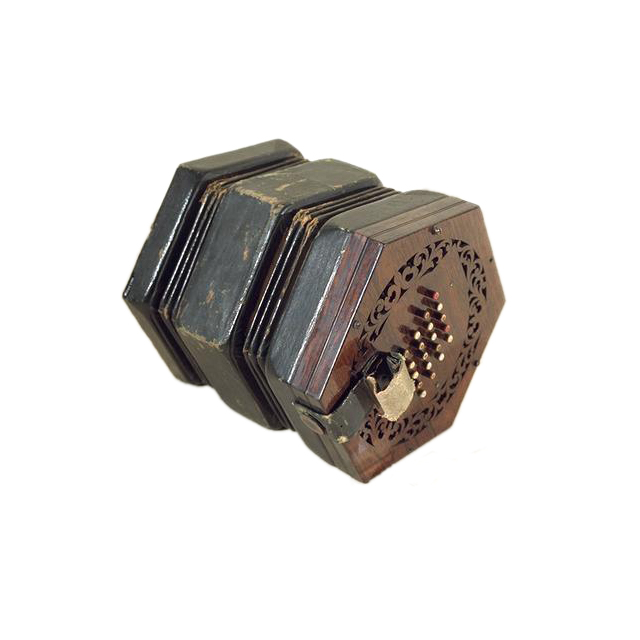
Double concertina prototype. 1844 patent system. Serial number 5 (inked beneath action board). No label, though the left-hand number area is illegibly stamped. 6.56" diameter flat solid rosewood ends, thick simple frets, no finger rests, with pine backing. Conventional split between end and action frame. 20 keys in four columns (the fingering system described in Wheatstone's 1844 patent). Broad green leather strap with nickel screw, with round brass inset to action frame. Two sets of three-fold bellows, dark green leather, separated by a 1 7/8" wide central section containing a partially completed system of wooden baffles, with leather seals. The central baffle allows left and right hands to be played independently with varying pressure and volume. Gold dots and circles papers. Bellows frame has silk-reinforced lower folds and triangular block reed pan cradles. The action is of conventional sheet brass levers, wound brass wire springs, and sheet brass pivots, stapled directly onto the action board. Square-end brass reed beds, with nickel tongues, some beds with notches (indicating the potential site of screws). Circular baffle screwed to wooden annulus around central hole, supported on cork blocks. The lower notes were once screwed onto the pan rather than slid into related notches. The pan is unusually deep and has a 4 7/8" diameter circular wooden baffle screwed to a wooden annulus mounted around the pan hole, and supported on cork blocks, to either concentrate the air flow or protect the reed tongues from touching the bellows. All parts are stamped L or R (for left or right). Found amongst a group of Wheatstone telegraphic apparatus from the old 'Wheatstone Collection.'



